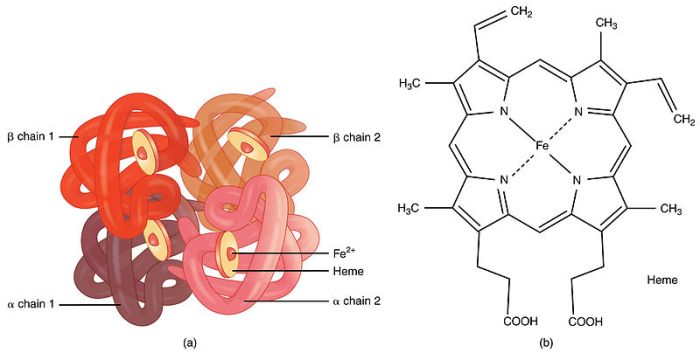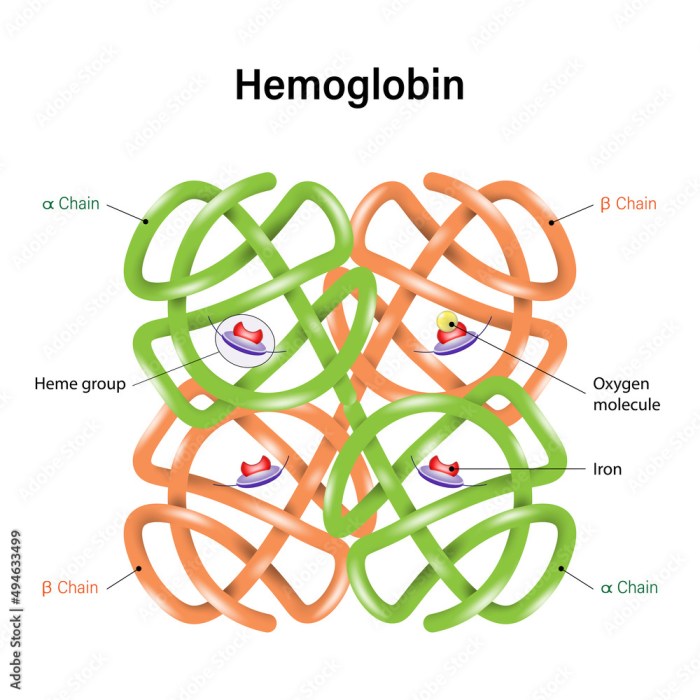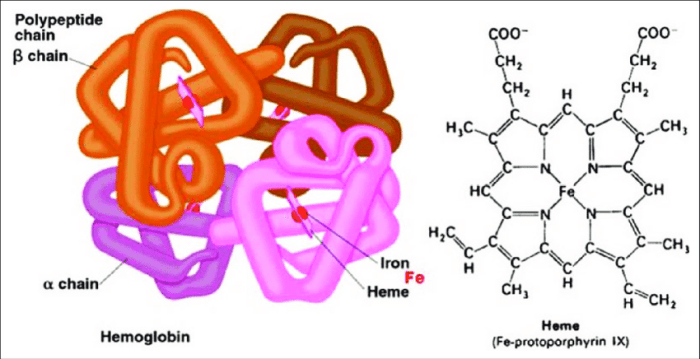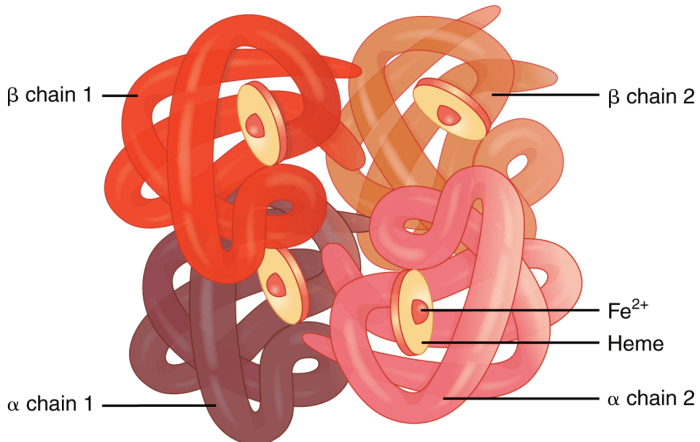Select all statements that correctly describe hemoglobin and myoglobin structure – In the realm of biochemistry, hemoglobin and myoglobin stand as captivating molecules, intricately involved in the vital process of oxygen transport and storage. Their structural intricacies, ranging from primary to quaternary levels, unveil a fascinating tale of molecular adaptation and functional specialization.
Embarking on a journey into the molecular architecture of these proteins, we delve into their similarities and differences, exploring how their unique conformations underpin their diverse roles within living organisms.
General Structure: Select All Statements That Correctly Describe Hemoglobin And Myoglobin Structure

Hemoglobin and myoglobin are two proteins responsible for oxygen transport and storage in biological systems. Despite their similar functions, they exhibit distinct structural features that impact their oxygen-binding properties.
Both proteins contain a heme group, an iron-containing porphyrin ring that binds to oxygen. The heme group is embedded within a polypeptide chain, providing the protein with its characteristic red color.
Quaternary Structure, Select all statements that correctly describe hemoglobin and myoglobin structure
Hemoglobin is a tetrameric protein, consisting of four polypeptide chains (two alpha and two beta chains) arranged in a tetrahedral quaternary structure. This arrangement allows for cooperative oxygen binding, where the binding of oxygen to one subunit increases the affinity of the other subunits for oxygen.
Tertiary Structure
Myoglobin, on the other hand, is a monomeric protein with a compact and globular tertiary structure. Its polypeptide chain folds into a single domain, creating a hydrophobic core and a hydrophilic surface. The tertiary structure of myoglobin facilitates its oxygen-binding function by stabilizing the heme group and providing a specific binding site for oxygen.
Primary Structure
The primary structure of hemoglobin and myoglobin differs in terms of amino acid sequence and molecular weight. Hemoglobin has a molecular weight of approximately 64.5 kDa, while myoglobin is smaller, with a molecular weight of around 17 kDa. These differences in primary structure contribute to the functional differences between the two proteins.
Ligand Binding
Both hemoglobin and myoglobin bind to oxygen, but they also interact with other ligands. Hemoglobin has a higher affinity for carbon dioxide than myoglobin, which is important for the transport of carbon dioxide from tissues to the lungs. Myoglobin, on the other hand, has a higher affinity for carbon monoxide, which can be toxic to the body.
Expert Answers
What is the primary structural difference between hemoglobin and myoglobin?
Hemoglobin is a tetrameric protein composed of four subunits, while myoglobin is a monomeric protein with a single subunit.
How does the quaternary structure of hemoglobin contribute to its cooperative oxygen binding behavior?
The cooperative binding of oxygen to hemoglobin is facilitated by conformational changes induced by the binding of the first oxygen molecule, which increase the affinity of the remaining subunits for oxygen.
What is the role of the heme group in hemoglobin and myoglobin?
The heme group is an iron-containing porphyrin ring that binds oxygen molecules. It is the prosthetic group essential for the oxygen-binding function of both hemoglobin and myoglobin.


